Table of contents
Kamut, also known as Khorasan wheat ( Triticum turgidum ssp. turanicum), is one of the ancient grains. The grains are almost twice as large as those of conventional wheat. The mild, slightly nutty taste of the Kamut goes well with many dishes when cooked.
Use in the kitchen
Khorasan wheat is becoming increasingly popular because it is not as over-bred as wheat. The individual grain is almost twice as large as the normal wheat grain and is a little more yellow. Cooked Khorasan is used in the kitchen in a similar way to long-grain rice, couscous or bulgur. The taste is mild and slightly nutty.
How can you prepare Kamut? You can add it as a side dish to all kinds of vegetables or use it to make delicious stews, for example with pointed peppers, carrots, tomatoes and zucchini. Kamut vegetable stews can be complemented well with cooked white beans, cooked kidney beans, tofu or tempeh. Cooked Khorasan wheat can also be used as a filling component in a salad. Kamut also tastes delicious as a pilaf with pomegranate and walnuts.
In addition to the grains, there is also Kamut flour and Kamut semolina, as well as Kamut pasta made from them. Due to its good gluten properties, the flour is ideal for baking. Also available is 'Green Kamut', a wheatgrass powder that can be used for smoothies and shakes.
Your own preparation
How can you cook Kamut? Soak the Kamut grains in plenty of water overnight. Throw away the soaking water. Put the Kamut in a saucepan and simmer with 2 to 2.5 times the amount of water (or vegetable stock) over medium heat with the lid closed for about 30 to 40 minutes. Remove the pan from the heat and let it cool with the lid closed until the grain has completely absorbed the liquid.
Vegan recipe for Kamut salad with avocado and rocket
Ingredients (for 4 people): 400 g Kamut, 700 ml water (or vegetable stock), 2 ripe avocados, 3 tbsp lemon juice, 4 spring onions, 80 g rocket, 2 tbsp almonds, 6 strawberries, 1 tsp agave syrup, salt,black pepper, rapeseed oil, white balsamic vinegar.
Preparation: Cook the kamut according to the instructions above. Allow the kamut to cool well. Halve the avocado, remove the pit and peel off the skin. Dice the flesh and sprinkle with lemon juice. Wash the spring onions and cut into thin rings. Wash and dice the strawberries. Wash the rocket and tear into bite-sized pieces. Add the avocados, spring onions and rocket to the kamut and season with agave syrup, spices, oil and vinegar. Chop the almonds into large pieces or cut into sticks and mix into the salad.
The salad tastes even better if it is left to marinate overnight. Simply add the rocket, strawberries and almonds just before serving.
Vegan recipes with Kamut can be found under the note: " Recipes that have the most of this ingredient ".
| Not only vegans or vegetarians should read this: Vegans often eat unhealthily. Avoidable nutritional errors. |
Purchasing - Storage
At large retailers such as Coop, Migros, Rewe, Edeka, Hofer, Volg, Spar, Aldi, Lidl and Billa, Khorasan wheat is usually not found in the range (as of 2023). Kamut can occasionally be found in organic supermarkets such as Denn's Biomarkt and Alnatura. In health food stores or online shops, you can buy Kamut or Khorasan wheat, mostly in organic quality. In addition to the whole grains, Khorasan semolina (Kamut semolina) or Kamut flour, as well as pasta made from Khorasan flour can also be found in stores. In addition to imported goods from the USA and Canada, you can also increasingly find products from Europe.
The availability of Khorasan wheat (Kamut) varies depending on the size of the store, catchment area, etc. If you are interested, click on our recorded food prices for the DA-CH countries (above under the ingredient image). There you will find current prices from various supermarkets and their price development.
Storage tips
If you have cooked too much, you can store cooked kamut grains in the refrigerator and eat them the next day. However, it is generally recommended that you always prepare food fresh.
Ingredients - Nutritional values - Calories
Cooked Kamut (organic) contains 132 kcal per 100 g. It is rich in carbohydrates (28 g/100g) and fiber (4.3 g/100g). The protein content is 5.7 g/100g, which corresponds to 11.4% of the daily requirement. With 0.83 g/100 g, cooked Khorasan wheat is low in fat. 1
Kamut contains a lot of selenium. Even cooked kamut contains 32 µg/100 g, which corresponds to 56% of the daily requirement. Brazil nuts contain even more selenium. Just 2-3 Brazil nuts (from Bolivia) cover the daily requirement of selenium. 1
Manganese is contained at 1.0 mg/100g, which corresponds to 52.0% of the daily requirement. This is comparable to cooked chickpeas (0.99 mg/100g) and cooked brown rice (0.97 mg/100g). Teff (dwarf millet) contains a lot of manganese at 9.2 mg/100g, which corresponds to 462.0% of the daily requirement. 1
It also contains phosphorus at 147 mg/100g, which corresponds to 21.0% of the daily requirement.Cooked black beans (140 mg/100g) and cooked kidney beans (138 mg/100g) have similar levels of phosphorus.Dried pumpkin seeds (1233 mg/100g) and chia seeds (860 mg/100g) contain a lot of phosphorus. 1
Khorasan wheat also contains essential amino acids such as tryptophan, phenylalanine, leucine and threonine. 1
You can find all the ingredients of Kamut, the coverage of the daily requirement and comparison values with other ingredients in our nutrient tables. In the article Nutrients explained you will get a detailed insight into the topic.
Effects on health
Ancient grains (Khorasan wheat, barley, spelt/spelt, rye, millet and oats) and pseudo-grains (amaranth, quinoa and buckwheat) are considered healthy because they are usually eaten as whole grains. Therefore, they have higher levels of healthy nutrients than refined grains. 2 The whole grain of kamut contains a high proportion of fiber. This has a variety of positive effects on our health. It is responsible for a healthy digestive system 12, has a positive effect on blood sugar levels when eating carbohydrates and starchy foods and can thus reduce the risk of type 2 diabetes 13. A diet rich in fiber leads to a longer feeling of satiety, which can help with weight loss. 14
Consumption of kamut products can lead to a reduction in total cholesterol, LDL cholesterol and blood sugar, both in healthy individuals 3 and in patients with type 2 diabetes 4. This is not the case with the consumption of soft wheat. However, the studies were only carried out with a small number of study participants and a verification of the results in a clinical study is still pending.
Compared to common wheat, Kamut has higher levels of eight out of nine minerals, contains up to 65% more essential amino acids and has more lipids and fatty acids. The protein content can be up to 40% higher than the average value of common wheat. 10 Kamut contains higher concentrations of phenolic compounds and carotenoids than common wheat. These are secondary plant substances and have antioxidant and anti-carcinogenic properties. 2
Dangers - Intolerances - Side effects
Does Kamut contain gluten? Like all types of wheat, Khorasan wheat contains gluten and gliadin (gluten protein). It is therefore not tolerated by people with celiac disease (CD). 2,5,6 There is some evidence that people with gluten sensitivity (non-celiac gluten sensitivity NCGS) tolerate Kamut better than soft wheat. Reference is made to in vitro studies with T cells and extracted gluten peptides, which show that the T cells sometimes react less strongly to extracts from Kamut wheat than to extracts from other types of wheat. 7,8 However, there are also studies that prove the opposite. 5 Therefore, Khorasan wheat is not an alternative for people with gluten sensitivity.
Ecological footprint - animal welfare
Old grain varieties, such as Khorasan wheat, often have greater diversity in their populations, which makes them more resistant to climate fluctuations and diseases. Modern soft wheat ( Triticum aestivum) and durum wheat ( Triticum durum), on the other hand, are often homogeneous varieties that are the result of intensive breeding programs and, in some cases, genetic engineering. This makes them more productive, but also more susceptible to diseases, pests and climate change. 2 Raw kamut has an ecological CO 2 footprint of 1.15 kg CO 2 eq/kg, whereas wheat only has 0.84 kg CO 2 eq/kg. 16 We do not have specific figures on the amount of water required to produce raw or cooked Khorasan wheat, but it is likely to be similar to that required for other cereals such as wheat (1827 litres/kg), 1544 litres of water are required to produce 1 kg of rye and 1788 litres for 1 kg of oats. 17
A 2008 study on the ecological balance between conventional and organic farming shows that organic farming has around 60 percent lower greenhouse gas emissions per kilogram of grain than conventional production. 18 Khorasan wheat or Kamut is mainly grown as organic grain. In order to accept long transport routes and thus further CO 2 emissions, one should choose regionally produced products.
Theoretically, a complete switch to climate-optimized, organic farming could reduce emissions by 15 to 20 percent. However, this would mean that 60 percent more land would be needed for the same production volume. This is not available in many places. In order to make a switch on the current area, the production and consumption of meat and milk would have to fall by around 70 percent at the same time. This is because a large part of the arable land is used to grow animal feed. Since 71% of greenhouse gas emissions from agriculture come from the production of animal feed, a reduction in meat and milk production would have a very large effect on reducing emissions from agriculture. An alternative climate strategy would be to optimize conventional agriculture for climate technology, especially through reduced use of mineral fertilizers. 18
Worldwide occurrence - cultivation
Modern DNA analyses have shown that Khorasan wheat ( Triticum turgidum ssp. turanicum) and thus Kamut is a natural hybrid between durum wheat ( Triticum durum) and a wild form of wheat ( Triticum polonicum) that occurs in the Fertile Crescent (Turkey, Iran, Iraq, Israel, Azerbaijan). 9 One of the current cultivation areas is in the Iranian province of Khorasan, which is where the name Khorasan wheat comes from. Khorasan wheat is one of the oldest cultivated types of grain and has been cultivated for around 6,000 years. 15
In 1990, a producer in the USA registered the ancient Egyptian word Kamut (= "soul of the earth") for organic Khorasan wheat cultivation as a trademark and marketed it under this name. The trademark guarantees certain properties in terms of protein and selenium content, as well as several quality specifications related to the cultivation conditions. For example, the grain must always come from controlled organic cultivation and must not be hybridized or genetically modified. 2,11 When it comes to Kamut wheat, you often read that it is of Egyptian origin. This goes back to the history of its reinvention and commercialization in the USA. The first grains that a soldier sent to his father in America are said to have come from an ancient Egyptian tomb. This is why Kamut is also called King Tut wheat. 11 The trademarked Kamut wheat is mainly grown in North America and Canada. However, it is also increasingly produced in Thailand, Australia and Italy. 11 Kamut and Khorasan wheat are also grown in small quantities in Germany, Austria and Switzerland.
Information on cultivation and harvest can be found under the link to Kamut or Khorasan wheat, raw, organic?
Further information
Khorasan wheat ( Triticum turgidum ssp. turanicum) is a tetraploid wheat subspecies, which means that its general biological properties are similar to those of durum wheat ( Triticum durum). Botanically, kamut, like all cereals, belongs to the grass family ( Poaceae). The grains are like nuts, single-seeded indehiscent fruits. The ears of khorasan wheat have long awns.
Alternative names
Khorasan wheat is known by its brand name Kamut, as well as King Tut wheat, Oriental wheat or Balady Durum (modern Egyptian name for Khorasan wheat). In English it is known as khorasan wheat, oriental wheat or Kamut. The spelling Khorosan or Chorosan is incorrect.
Bibliography - 18 Sources (Link to the evidence)
| 1. | USDA United States Department of Agriculture. |
| 2. | Bordoni A, Danesi F, Di Nunzio M, Taccari A, Valli V. Ancient wheat and health: a legend or the reality? A review on KAMUT khorasan wheat. Int J Food Sci Nutr. 2017 May;68(3): 278-286. |
| 3. | Sofi F, Whittaker A, Cesari F, Gori AM, Fiorillo C, Becatti M, Marotti I, Dinelli G, Casini A, Abbate R, Gensini GF, Benedettelli S. Characterization of Khorasan wheat (Kamut) and impact of a replacement diet on cardiovascular risk factors: cross-over dietary intervention study. Eur J Clin Nutr. 2013 Feb;67(2): 190-5. |
| 4. | Whittaker A, Dinu M, Cesari F, Gori AM, Fiorillo C, Becatti M, Casini A, Marcucci R, Benedettelli S, Sofi F. A khorasan wheat-based replacement diet improves risk profile of patients with type 2 diabetes mellitus (T2DM): a randomized crossover trial. Eur J Nutr. 2017 Apr;56(3): 1191-1200. |
| 5. | Colomba MS, Gregorini A. Are ancient durum wheats less toxic to celiac patients? A study of α-gliadin from Graziella Ra and Kamut. Scientific World Journal. 2012;2012: 837416. |
| 6. | Brouns F, Geisslitz S, Guzman C, Ikeda TM, Arzani A, Latella G, Simsek S, Colomba M, Gregorini A, Zevallos V, Lullien-Pellerin V, Jonkers D, Shewry PR. Do ancient wheats contain less gluten than modern bread wheat, in favour of better health? Nutr Bull. 2022 Jun;47(2): 157-167. |
| 7. | Molberg O, Uhlen AK, Jensen T, Flaete NS, Fleckenstein B,Arentz-Hansen H, Raki M, Lundin KE, Sollid LM. Mapping of gluten T-cell epitopes in the bread wheat ancestors: implications for celiac disease. Gastroenterology 2005 Feb;128(2): 393–401. |
| 8. | Spaenij-Dekking L, Kooy-Winkelaar Y, van Veelen P,Drijfhout JW, Jonker H, van Soest L, Smulders MJ, BoschD, Gilissen LJ, Koning F. Natural variation in toxicity of wheat: potential for selection of nontoxic varietiesfor celiac disease patients. Gastroenterology 2005 Sept;129(3): 797–806. |
| 9. | Khlestkina EK, Röder MS, Grausgruber H, Börner A. A DNA fingerprinting-based taxonomic allocation of Kamut wheat. Plant Genetic Resources. 2006 Dec;4(3): 172-180. |
| 10. | Békés F, Schönlechner R, Tömösközi S, Chapter 14 – Ancient Wheats and Pseudocereals for Possible use in Cereal-Grain Dietary Intolerances, In: Wrigley C, Batey I, Mskelly D, cereal Grains (Second Edition), Woodhead Publishing Series in Food Science, Technology and Nutrition. Woodhead Publishing, 2017: 353-389. |
| 11. | Kamut.com The Story. |
| 12. | Gill SK, Rossi M, Bajka B, Whelan K. Dietary fibre in gastrointestinal health and disease. Nat Rev Gastroenterol Hepatol. 2021 Feb;18(2): 101-116. |
| 13. | Evans CEL. Dietary fibre and cardiovascular health: a review of current evidence and policy. Proc Nutr Soc. Februar 2020;79(1): 61–7. |
| 14. | Miketinas DC, Bray GA, Beyl RA, Ryan DH, Sacks FM, Champagne CM. Fiber intake predicts weight loss and dietary adherence in adults consuming calorie-restricted diets: the pounds lost (Preventing overweight using novel dietary strategies) study. J Nutr. 1. Oktober 2019;149(10): 1742–8. |
| 15. | Landwirtschaftskammer Oberösterreich. Bio Khorasanweizen (Triticum turgidum x polonicum). |
| 16. | CONCITO. The Big Climate Database, version 1. 2021. |
| 17. | Mekonnen MM, Hoekstra AY. The green, blue and grey water footprint of crops and derived crop products. Hydrol. Earth Syst. Sci. 2011; 15: 1577-1600. |
| 18. | Foodwatch.org Klimaretter Bio? Der foodwatch-Report über den Treibhauseffekt von konventioneller und ökologischer Landwirtschaft in Deutschland. 2008 (PDF). |

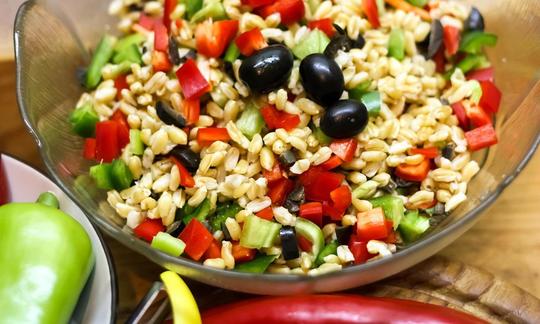

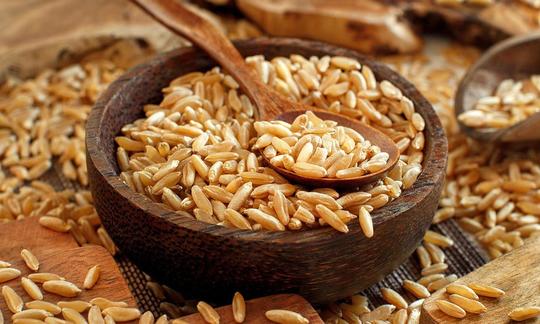

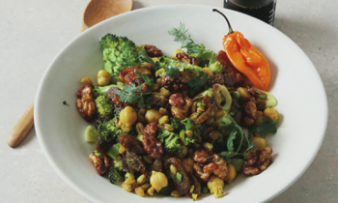
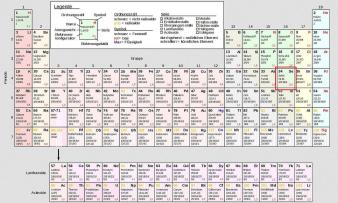

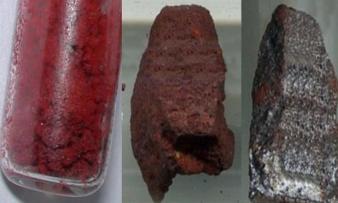


Comments